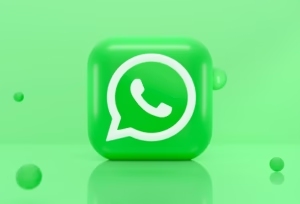In the hyper-connected era of today, messaging apps have become the pulse of digital communication. Amongst the ocean of apps, WhatsApp and Telegram are two of the most powerful platforms. Both have robust features, millions (even billions) of users, and keep updating to remain ahead in the game. But in 2025, with new updates, privacy issues, and user expectations on the rise—which one really stands supreme? In this blog, we go deep into the features, performance, privacy, and more to figure out if WhatsApp or Telegram deserves the messaging crown in 2025.

Popularity & User Base
As of 2025, WhatsApp remains on top worldwide with more than 2.8 billion monthly active users, particularly ruling the domains of India, Brazil, and parts of Europe. Telegram, however, has made significant leaps with more than 900 million users, with notable base in Russia, Iran, and increasing popularity in the US and India.
Telegram has been spurred by individuals looking for alternatives for their privacy or feature-laden experiences. WhatsApp remains the largest, but Telegram is rapidly closing the gap, particularly among privacy-orientated and tech-savvy users.
Privacy & Security
Privacy has now become a key consideration for most users when deciding on a messaging app. WhatsApp applies end-to-end encryption (E2EE) as its default for every message, such that only you and the receiver can see what’s being sent. But it does gather metadata (like with whom you are messaging and at what time), which has become a point of concern, particularly after its update in 2021.
Telegram, although providing optional end-to-end encryption through “Secret Chats”, does not encrypt regular cloud-based chats as a default. Yet, Telegram excels at data minimization and anonymity—it lets users chat via usernames rather than phone numbers, giving them an additional layer of privacy.
Telegram also saves messages on the cloud, which enables multi-device syncing but might concern some users with data security. WhatsApp, on the other hand, recently introduced multi-device support while keeping messages device-encrypted.
Features Comparison
Comparing features of WhatsApp and Telegram, it’s evident that both apps provide a strong messaging experience; however, they meet different user needs. WhatsApp prioritizes simplicity and reliability. It provides rapid and seamless messaging with core features such as voice and video calls, disappearing messages, broadcast lists, and the ubiquitous double-tick read receipt mechanism. But Telegram takes it a step further by providing advanced features that will attract power users. For example, Telegram provides the ability to schedule messages, send silent messages that won’t trigger a notification, and pin several messages in chats and groups for easier organization.
Sharing media is also an area where Telegram excels. It allows up to 2GB or higher per file of file uploads and preserves the quality of images and videos. WhatsApp, although improving over the past few years, still compresses media files and has a smaller file size limit, which is annoying for people sharing high-quality content or big documents.

When it comes to personalization, Telegram is more personalized. Users can customize the app’s theme, chat background, accent colors, and even design or download animated stickers. WhatsApp is quite conservative in this regard, with limited visual customization options beyond wallpapers and dark mode.
Both apps also have some exclusive features to offer. Telegram boasts bots, public channels, polls, and storage in the cloud of messages that facilitates hassle-free sync on multiple devices. It also features a “Saved Messages” mode, which serves as a sort of personal notebook. In contrast, WhatsApp focuses on features that benefit regular users and small businesses. These features include WhatsApp Status (like Instagram Stories), sharing one’s location, and WhatsApp Pay (currently supported in limited regions), so it is helpful not only for messaging but also for making financial transactions.
Overall, while WhatsApp does all the basics really well and is ideal for everyday use, Telegram is geared more towards those seeking flexibility, improved media support, and more advanced functionality—particularly in groups or professional networks of larger size.
READ ALSO: GTA 6 System Requirements
Ease of Use & Interface
WhatsApp boasts its simple, elegant, and user-friendly interface, which is suitable for people of all ages. The appearance has not significantly altered, but that is its appeal—familiarity.
The Telegram interface is a little more contemporary and loaded with more menus and buried features, which might be too much for someone just starting to use it. Once you get the hang of Telegram, though, it is richer and more dynamic.
Group interactions are central to both apps, but Telegram has an important advantage in this regard. Telegram enables groups of up to 200,000 members, has Channels for broadcasting, and features more advanced admin tools such as polls, quizzes, and fine-grained permissions.
WhatsApp has also launched Communities, which allow people to consolidate several related groups under a single community. While this is convenient, it still only accommodates 1,024 members for a group, so it is more for smaller, intimate interactions.
Use Cases: Personal vs. Business
WhatsApp is more focused on one-to-one communication and small businesses. Using tools such as WhatsApp Business API, businesses can send messages, automate responses, and directly engage customers. Its deep integration into phone contacts and effortless calling features also make it suitable for everyday use.
Telegram is more focused on communities, creators, and tech users. Influencers, news agencies, and teachers use Public Channels. Open API and bots make Telegram a heaven for developers, and it becomes a paradise for automation and innovation.
Pros and Cons Summary
When comparing the advantages and disadvantages of WhatsApp and Telegram, it’s apparent that each of these apps offers unique strengths in addition to some drawbacks. WhatsApp leads in privacy by default with end-to-end encryption on all private messages and calls without needing the users to switch something on manually. It’s perfect for users who seek secure communications without having to go digging into settings. It further enjoys unparalleled global popularity, hence the default application for communicating with loved ones, relatives, and companies worldwide. The user interface is straightforward, intuitive, and easy to use—even for less technologically inclined users.
But WhatsApp lacks when it comes to file sharing and customization. Users can send files only up to 100MB, and media gets compressed, which may not be so convenient for experts uploading high-resolution content. It also isn’t flexible when it comes to personalization—chat themes and interface settings are limited, and bot or channel features aren’t present.

Conversely, Telegram excels with its full-featured environment, providing sophisticated features such as bots, public channels, sticker sets, and multi-device syncing with cloud backing. It is capable of sharing large files (up to 2GB or larger) without compromising on quality and has high levels of customization to cater to personal preferences. Telegram is also less invasive in metadata collection and even enables users to communicate without exposing phone numbers by employing usernames, further adding to privacy.
All that being said, however, Telegram does have its downfalls. That end-to-end encryption is not automatically turned on for all chats could be worrying for security-conscious users. Secret Chats need to be activated manually, something that can be forgotten by novice users. Also, although the interface of Telegram is modern and flexible, there are so many features that at first, they can be intimidating, particularly to users coming from less feature-rich apps.
In summary, WhatsApp excels at simple, secure, and mass communication, whereas Telegram provides a more capable and extensible experience for individuals who need flexibility, privacy features, and better media features.
Final Verdict: Which Reigns Supreme in 2025?
Picking a winner between WhatsApp and Telegram in 2025 ultimately depends on your own needs and preferences—because both apps are great, but cater to slightly different users. WhatsApp is still the gold standard when it comes to international reach, simplicity, and built-in privacy guards. Its lean design and close integration with your phone’s contact list makes it so handy to use for daily communication. It’s particularly well-suited for users who value simplicity, security, and broad adoption, since almost everyone already has WhatsApp installed.

But Telegram hews out its niche as the more powerful, more versatile messaging platform, stuffed with high-level features, customizable options, and tools for creators, communities, and technology geeks. It‘s for individuals who need to have more agency over their messaging experience—through big group conversations, public channels, or bot-based task automations. Telegram‘s privacy features, such as username-based communication and Secret Chats with the option to choose, also appeal to privacy-conscious users or users who wish to communicate without sharing their phone numbers.
In the end, there is not one true ruler in 2025 but simply a choice for our lives to best fit. If your requirements are to use a basic, safe and popular messaging app, then WhatsApp is now and will always be the king. But if you’re someone who likes depth of features, customization, dealing with larger communities and files then Telegram is probably your one true king. The messaging app that reigns supreme for you is your supreme messaging app.
